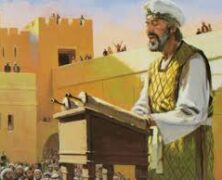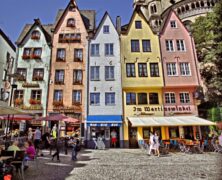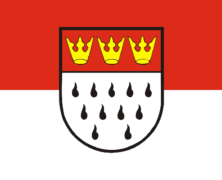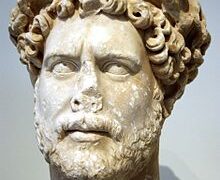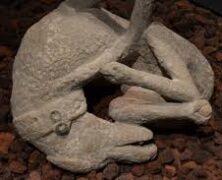One of the books I got recently is James Gilligan’s Why Some Politicians are more Dangerous than Others. He’s a psychiatrist and was trying to work out why there are periodic spikes and dips in lethal violence in The United States. He was able to use data to demonstrate that there’s a direct correlation between Republican presidents and rises in lethal violence and falls during the tenures of Democratic presidents. He tells us on page 3 that “When [he] subjected these yearly changes to statistical analysis, [he] found that in all three cases – for suicide, for homicide, and for total lethal violence (meaning suicide and homicide rates combined) – the association between political party and lethal violence rates was statistically significant.” What’s more, the data shows that murders and suicides rise and fall together which is remarkable because, as Gilligan rightly says, we don’t see suicides (the people that is) as being very similar to murderers. Suicidal people “are generally considered to be either sad or mad; they are patients usually seen in a psychiatric office or hospital. People who commit homicide are usually seen as criminals and considered to be bad. They are commonly regarded as needing not treatment but punishment, and they are found, for the most part, in prison, not mental hospitals or private offices.” On the subject of motivation for murder and suicide, Gilligan argues that “shame [is] the proximal cause of violence, the necessary – although not sufficient – motive for violent behaviour.” He wonders whether “unemployment, relative poverty, and the sudden loss of social and economic status have been observed to increase the intensity of the emotion of shame.” Orwell on Nationalism Then I turn to George Orwell’s essay, Notes on Nationalism. He writes that this is...
Americans, Brains and Ezra the Scribe...
posted by Cloud
The Monroe Doctrine This was what would now likely be termed an isolationist policy adopted by the Americans which stated that the Europeans had no business interfering in any way on the continents of the Americas – that is, Central and South America. The Americans supported independence movements in Chile, Argentina, Colombia and Mexico. They were the first to recognise Brazilian independence in May, 1824. The British approached the Americans in 1823 to make a joint declaration to the effect that ex-Spanish colonies in the Americas were irrecoverable to Spain. In the end, the Americans decided not to make a joint statement but a separate one stating, in a word, “Hands off the Americas, Europe!” (Source: The Treasury of the Encyclopædia Britannica, Viking Penguin, 1992 Brain Surgery Henry Marsh, in his book, “Do no Harm: Stories of Life, Death and Brain Surgery,” admits to causing harm to a patient in an attempt to help her. His efforts to remove a tumour from her brain resulted in paralysis. He writes that “[He] had been insufficiently fearful.” He wouldn’t feel at peace again until the next successful operation had been completed. (Source: Marsh, Henry, Do no Harm: Stories of Life, Death and Brain Surgery, Wiedenfeld & Nicolson, 2014 Ezra, the Scribe After the Judeans were banished sometime around the 6th century B.C.E. they were allowed to settle in Nippur, near Babyon. One of their tribe was Ezra, a scribe. He and some followers were tasked with going to Jerusalem by Artaxerxes, king of Persia. They had his protection but his interest wasn’t altruistic: he wanted them to establish an imperial outpost. Ezra was horrified by what he found in Judea: it was nearly deserted, and those who did live there were ignorant farmers who’d shed their...
Fairy Tale of New York by Daniel Dilworth...
posted by Cloud
Fairytale of New York is a 1987 hit Christmas song for Irish-British band The Pogues. Fairytale, although having an enduring popularity in Britain and Ireland, only peaked at No. 2 in the British charts that Christmas, beaten by Pet Shop Boys’ song Always on My Mind. This song was a cover of a song previously released by Elvis Presley. Elvis Presley, one of the best known singers of the 20th century, originally became popular in the 1950s, a decade synonymous with the emergence of many singers and entertainers, including Little Richard, Frank Sinatra and Bobby Darin. Darin, an actor as well as a singer who died in 1973, was the subject of a 2004 biopic Beyond the Sea, which was co-written, directed and starred the actor Kevin Spacey. Spacey was, as of the time of writing, a subject of many allegations of impropriety and, as a result, was recast in the film All the Money in the World just weeks before its theatrical release, and was replaced with Christopher Plummer. “All the Money in the World” is the story of the infamous kidnapping of John Paul Getty III, grandson of the industrialist J Paul Getty. Getty was, in his day, one of the wealthiest men in the world, and is remembered for his frugality. John D Rockefeller is similarly remembered as one of the world’s wealthiest men; he was, in fact, the wealthiest American of all time. Rockefeller opened the Rockefeller University in New York and endowed his new foundation with part of his fortune. Rockefeller University was not the only university in the United States to be founded by a magnate; Carnegie Mellon University was formed through the merger of Mellon Institute of Industrial Research and Carnegie Institute of Technology, which was founded by Andrew Carnegie, a man as well-known for his business acumen as for his philanthropy. Carnegie donated large sums of money to various good causes,...
From Francesco Goya to Francesco Goya...
posted by Cloud
Francesco Goya was a Spanish painter and portraitist whose career reached its peak in the late eighteenth century. He was a contemporary of another painter, a British one, Joseph Wright of Derby. Another British artist you might have heard of is Mick Jagger and despite what some of you think, Wright and Jagger were not contemporaries. However, one of Wright’s most famous paintings is called An Experiment with a Bird in the Air Pump. Now, you might have heard of the word “pastiche” and in case you haven’t I tell you what it is: it’s a work of art by one artist that closely resembles that of another’s, but in a respectful way – this differentiates it from a parody. The Rolling Stones’ 2005 album, A Bigger Bang, features as its cover a portrait of the band but with strong resemblances of Wright’s aforementioned painting. On that album is a song called Back of my Hand. It’s a song about a clairvoyant, a visionary who can “read [the future] like the back of [his] hand” but specifically he see “paranoias” and, yep, you’ve guessed it – Goyas, that it is to say, paintings by Francesco...
WILLKOMMEN IN KÖLN: A GLOBETROTTER’S DIARY by Cian Morey...
posted by Cloud
DAY SEVEN Schluß. This is the end. The time has come for me to end my seven-part series on the wonders of Köln, or, as they say in westernised Germany, “the time has come for me to end my seven-part series on the wonders of Köln”. Anyone who has been to Köln before or who is familiar with the city from any vague glance at a travel book should know that there is one major part of the Kölnisch landscape that I have neglected to mention. That major part is, of course, the majestic museum to the memory of the inventor of Eau de Cologne, which basks triumphant on the corner of the cathedral square. So I think it is only fitting that I end my series of accounts by not writing about that at all, and writing about the second most major part of the Kölnisch landscape instead – the Hohenzollernbrücke. I was fortunate enough to get a chance to cross this monument on the final day of my travel diary in a frantic search for an U-Bahn station that wasn’t undergoing repairs, and dank Gott for it – it is sublime. In the simplest of terms, this is a large bridge composed of several steel arches that straddles the Rhine just as it passes the Köln cathedral, and it features both train tracks and walkways for pedestrians. As a piece of engineering alone it is not particularly attractive, especially when compared to the sleek genius of the bridges in places like Düsseldorf, and it is surrounded by four statues of famous German leaders on horseback which include, to my moderate bafflement, Kaiser Wilhelm II. Even though the view is pleasant and it is readily accessible, there is nothing physically outstanding about it; but the real magic lies...
WILLKOMMEN IN KÖLN: A GLOBETROTTER’S DIARY by Cian Morey...
posted by Cloud
DAY SIX The layout of commercial Köln is very simple. There are two shopping streets, Hohe Straße and Schildergasse Straße. That is all. Well, alright, I exaggerate a little, but almost every shop you could need here can be found at some point along both of those streets and there really is very little point in meandering off somewhere else, at least for the purposes of throwing away your hard-earned cash (though there are a few elaborate fountains in the Old Quarter that invite that sort of thing as well). The two aforementioned streets have a range of German and international shops, everything from Currywurst emporiums to Accessorize. There are even two H&M stores on the same promenade. The Apple store – because let’s be real, we all already know that there is one – has gouged out the innards of a classic-looking 19th-century building and features more hovering attendants than customers, ready to swarm you as soon as you put a foot over the threshold and jabber at you in what is probably seriously cool, hip Deutsch. There are multiple shoe shops lining the length of Schildergasse Straße, which for your convenience are all exactly the same (“Kämpgen”). And most significantly of all, there on the corner of the whacking big Neumarkt-Galerie (a word which here means “huge shopping centre that is 75% Primark with a few other outlets”) – there lies Mayersche, the enormous bookshop that I have been waiting for for the last 5 days. When I say enormous, I mean it. It is three stories tall. The second floor has a dedicated reading corner with a long table and chairs. There is a café and a piano on the top floor for the more uninhibited visitor (and believe me, they are common)....
WILLKOMMEN IN KÖLN: A GLOBETROTTER’S DIARY by Cian Morey...
posted by Cloud
DAY FIVE There are a small number of things in the world that possess the power to really make you realise just how minuscule a place you occupy in the big old universe. Köln Cathedral is one of these things. It towers above the rest of the city, its spires always visible in some distant direction wherever you are, unless they are shrouded in fog like a heavenly gate. Standing before it in Köln’s main plaza, you cannot even see the top, though you are still as awed as ever. The doors alone are immense, deep-set in spectacular mullions like the eyes of a monstrous hermit crab. Poised beside them like an unofficial ticket-dispensing machine is a priest with a touch of the circus magician about him, dressed in a sweeping red robe, and probably carrying a small wooden box to collect “voluntary” donations for the cathedral. But even if he does sidle into your path and smile a few coins out of your purse, you will soon see that he does so with good reason; for the interior of the Dom is a beautiful, beautiful place. The nave is high and arched, and at ground level you walk between blocks and blocks of pews, separated only by tall ribbed pillars, candlesticks and the occasional lost foreigner. Tour guides squeeze between the mobs of visitors while frantically wafting the flimsiest of signs above their heads, hoping that the rest of their group are bobbing along behind them. The looming stained-glass windows of the cathedral seem to cycle through more artistic periods in a few square metres than a full art gallery does in three floors; there is everything from the flat and simple archaic designs to the more modern, deep, bright works to one...
WILLKOMMEN IN KÖLN: A GLOBETROTTER’S DIARY by Cian Morey...
posted by Cloud
DAY FOUR So there’s this thing on the continent called “history”. The Americanised west should try it sometime. Köln, like most long-standing European cities, has an Old Quarter, and furthermore, an Old Quarter that is respected and protected. I mentioned before how the city centre has been overrun and ruined by multinational corporations and western fast-food empires, in some strange spiritual sequel to the rampages of Visigoths and Vandals in the 5th century. Until now I believed that that American Invasion was a big messy thing that came at a heavy cost to the region’s history, but, as I’ve recently discovered, it just means that all the history you could ever need has been neatly parcelled up and tucked into one small district in typical orderly German fashion. Here in Köln’s Old Quarter they’ve got it right. Here in Köln’s Old Quarter there is no great push towards industrialisation, no craze for erecting useless empty skyscrapers, no gnawing addiction to historical bulldozing. Here in Köln’s Old Quarter they understand the value of their past and they embrace it with open arms instead of wrecking balls, and their admirable care for their common cultural history is nowhere more obvious than in the very heart of the riverside Altstadt. South-east of the Dom, well out of range of the quarantined zones that contain such festering diseases as McDonald’s and Accessorize, lies this charming sprawling district of cobbled sidestreets and crooked buildings, packed with all manner of quirky shops, artistic ideas, excellent eateries and pompous pigeons. A soft scent of fresh baking bubbles through the alleyways, shafts of light peep around corners and through the most interesting of nooks, and there is an overall sense of tranquility and secretive magic that I had always believed was unique...
WILLKOMMEN IN KÖLN: A GLOBETROTTER’S DIARY by Cian Morey...
posted by Cloud
DAY THREE While I have previously mentioned that Köln is massive, I must clarify that for all its massiveness it is also dense, sort of like a big bar of gold, or Donald Trump’s head. Quite a lot of tourist attractions have been neatly packed into the one convenient Fußgängerzone – such as the cathedral, the shopping quarters and an assortment of museums – and this is rather fortunate, because public transport services are absolutely abysmal. For the last two days I braved the city on foot, which was tolerable at the time but left me exhausted and had incapacitated my right leg by this morning. I felt as though my ankle had been glued to the ground while the rest of me was bungee-jumping off a cliff. I woke early this morning with the deep determination to limp posthaste to the Hauptbahnhof and seek an elusive map of public transport zones. The precise reason for my waking early was a failing in my apartment’s air conditioning unit which necessitated repairs by a cohort of workmen who looked distinctly like a geriatric edition of the Super Mario Bros. The air conditioning flaw itself was barely noticeable, but the true hardship was that the repairs simply had to be performed at 8 o’clock in the morning, requiring me to be out of bed at 7 and out the door within the hour. While the average German day would start at about 6:30 anyway, this sort of timeframe is nightmarish to a holidaying student in summertime, who would rather cling to his bed like a sloth to a tree. Nonetheless I did what I had to do, and, as I later discovered, Mario did indeed repair the air conditioning to a high standard. To return to...
WILLKOMMEN IN KÖLN: A GLOBETROTTER’S DIARY by Cian Morey...
posted by Cloud
DAY TWO The morning of the second day of any holiday abroad is a tiny golden window in which you firmly believe you are a god. Having made it through the various circles of the hellish first day and come out the other side intact, you are convinced you can do anything. You are utterly familiar with your surroundings. You are a compass on legs when it comes to the navigation of sidestreets. You have become fluent in the language overnight, you are suddenly one of the place’s leading culinary experts, and you are ready to give the best guided tour that any confused newcomer has ever had the misfortune of experiencing. You are invincible. This window of invincibility lasts for roughly 45 seconds once you step out of range of the hotel. My plan today was a very simple one – explore Köln’s Ludwig Museum, find a bookshop that I’d seen the previous day, and hunt down a satisfying dinner somewhere in between. Ultimately I succeeded in every aspect, but not without a great deal of trouble. All of which made the day much more interesting than I had anticipated. The first issue was the weather, and its headwrecking changeability. Backtracking on its promises (meteorologically-speaking) with more fiendish enthusiasm than the Labour Party, it was sunny, raining, dull and sunny again within the space of about 20 minutes. I lost a good deal of time from the start of my excursion frantically switching outfits like a bad actor in a one-man play. Once I settled on an eccentric fashion of light shirt plus substantial rainjacket, I chugged towards the cathedral, the centrepoint at which my awareness of the whole city is anchored. On the way I was questioned by another tourist in search...
WILLKOMMEN IN KÖLN: A GLOBETROTTER’S DIARY by Cian Morey...
posted by Cloud
DAY ONE Köln. As I write this, I sit by a window in a slightly cramped room on the highest floor of an inner-city apartment block, surrounded by a great many other inner-city apartment blocks, a baffling prevalence of the English language, and an overwhelming lack of lederhosen. Yes, this is Germany. Travel writing has never been a strong point of mine and I have written fewer diary entries in my life than Neanderthals have written on the walls of caves, but considering that I’m staying here for the next week I’ve decided to keep track of my experiences. Until now I have rambled from France to Finland and from Brussels to Barcelona, but I have not set a single foot in Germany. Thus I am blessed, or perhaps cursed, with a true outsider’s perspective, where everything here is new to me and I’m as impartial as I could hope to be. (I doubt that will last for long, but we’ll see what happens.) With these articles you can enjoy the enviable experience of witnessing one of the world’s most influential countries through the eyes of one of the world’s least influential people, a bumbling Irish student with absolutely no idea of what’s going on around him. Viel Spaß! The first thing that the average turbulent tourist will notice upon arrival in Köln (for the uninitiated, “Köln” is the official German name of what we English-speaking perfume connoisseurs would know as “Cologne”), is that it is big. Very big. In fact, all of Germany is massive, which you might think goes without saying, but honestly its massiveness is unmissable once you’re in it and simply has to be mentioned. It isn’t just the sheer landmass that’s enormous, but literally everything, from the heights of...
A GLOBETROTTER’S DIARY: A PREAMBLE by Cian Morey...
posted by Cloud
Dear readers, whoever and wherever you may be, It is one of the eternal curiosities about the Irish people that they always seem to be trying to get as far away as possible from their homeland. I like to think that our population here in the Emerald Isle has been perhaps genetically instilled with some great fascination, some powerful drive to travel the world and broaden their horizons in foreign cultures, and maybe even spread their own meagre wisdom. In the words of one of the twentieth century’s foremost philosophers, explorers and leading fictional characters, James T. Kirk, it is and has always been the destiny of the Irish to “seek out new life and new civilisations, to boldy go where no man has gone before”. There are Irish pubs in every major city, there is Irish literature on every good bookshelf, and there is an Irish twig of dubious authenticity on every good American President’s family tree. We have set forth in force in these last few centuries and we have just about conquered the world. Or maybe it’s just that we all really hate the rain here, which is as good a motive as any for getting the hell out. For whatever reason, we tend to find ourselves sprinkled across the globe as though God accidentally spilled us like coffee on his blueprints when he was putting together the Earth. Another talent of the Irish, apart from running away from Ireland, is writing. It is only natural then, in between booking the next sunshine holiday and experimenting valiantly with the local alcohol of whatever region we’ve thrown ourselves into, to attempt to combine our two natural gifts and produce some actual, legible “travel writing”. It may not be the most popular corner...
Polyarchy, foxes, wolves and other stuff....
posted by Cloud
Noam Chomsky In Doctrines and Visions, Chomsky alludes to notion that there are, at any one time, only a minority of men capable of ruling since most men are beasts. Since the Revolution in England in the seventeenth century, democracy hasn’t been about the multitude of “beasts in men’s shapes” but rather the concentration of power in the hands of the few. These “men of best quality” serve to ensure that “a system of elite decision-making and public ratification” is enshrined: “polyarchy” is the term. How is the multitude to be put in its place. One way is to manufacture consent, that “public ratification.” People must believe in and willingly adhere to what their leaders are telling them. Walter Lippman wrote that a “specialized class” of leaders must be empowered so as to direct the public who, without these leaders wouldn’t manage their own affairs. THe public, according to Lippman are ignorant and meddlesome; leaders of men are trained “in the law schools and law offices and in business” so as to “live free of the trampling and the roar of a bewildered herd…ignorant and meddlesome outsiders.” Niccolo Machiavelli’s The Prince This famous and supposedly precocious political thinker Machiavelli, whose name is nowadays an adjective meaning anything from “devious” to “self-serving,” wrote The Prince as a CV for a job in the administration of Lorenzo De’ Medici of Florence. In it, he says more or less that he has an understanding that men generally do not have and that, while he has access to knowledge and insight that may be unsavoury, it is no less essential for it. Machiavelli advises Lorenzo that “there are two ways of fighting: by law or by force.” The first is preferable but sometimes ineffective. Leaders must derogate to...
The Tom Crean Diary of Polar Exploration...
posted by Cloud
Dear Thelma You know, with all the walking and looking around, endlessly looking around for something, anything, you forget how cold it is here. And where is “here” anyway? I know I sound negative but it’s hard, so hard. Cooper’s finally collapsed into a permanent low-mood; “He’s not depressed,” Scott insisted; “he’s just very terrified all the time.” “Of what?” I asked. “I dunno,” he said, “but I found him trying to insulate his head last night with a crate.” He returned to his sketchbook into which he draws portraits of his relatives from memory. Unfortunately, all his photographs were stolen. We’ve looked everywhere but not a sign so far. He used to enjoy copying them out with a burnt stick; all our pencils were used up when the kindling combusted. Still, he likes that auld stick. Scratcher and The Shifter have got old. They used to be thick as thieves, always pulling and tearing at dead stuff and eating bits of Browny. Now they just lick at each other and try to bury themselves alive in the ice. Scott wanted them shot but Cooper’s aunt wouldn’t hear of it so Scott would change the subject to Western man’s reimagining of the snow through adversity which nobody wanted to know about. Bloom’s gone again. He got up yesterday morning and told everyone, “I’m going outside; I may be gone some while. Don’t wait up,” and off he went, nude, except for a huge hat and waving at nothing. “He’ll be back,” Scott insisted. “Feck him,” Tawny Owl grunted; “let him off, mad bastard.” Tawny Owl came to my part of the tent yesterday and told me he had something to tell me. He looked about him several times and stretched and sang the first...
The Intimate Sense of Smell...
posted by Cloud
The Intimate Sense of Smell “The Intimate Sense of Smell” in Nat Geo by Boyd Gibbons (Sept. 1986) features the word “mesquite.” In reference to Baudelaire the article uses the word “censer.” ( The former is a kind of tree; the latter is synonymous with “thurible.”) “What we lack is not a profound sense of smell, but encouragement to talk about intimate odors.” Neither do we practice an adequate vocabulary when it comes to smell. Germans say “Ich kann ihn nicht riechen.” This means “I can’t smell him,” which really means “I can’t stand him.” Knights In Lawrence James’ “Warrior Race” about the British at war, knights are depicted as physically powerful, highly trained and spiritually intact servants of their king. There’s a “but;” the demands of chivalry were such that over time acquisitiveness became a greater influence. A knight was entitled to the spoils of war. He was, after all, risking life and limb for victory; why shouldn’t he profit? Kings such as Richard III and Henry VIII actively encouraged rapacious, vengeful behaviour in their knights, ensuring that a message was sent – namely that challenging his power entailed consequences. Not that Big Brother Lionel Shriver’s “Big Brother” tells the story of Pandora Halfdanarson whose brother Edison was once a successful jazz pianist and is due to stay with her for a while. She collects him at the airport only to discover he is morbidly obese. She acts like she doesn’t notice but before long tensions arise at home, not least because her fitness-obsessed husband Fletcher can’t abide her sibling; neither does the latter try especially hard to get along with his brother-in-law. Edison agrees to lose weight with Pandora’s help but this help may come at the cost of her marriage since...
Jeremy Clarkson by Daniel Dilworth...
posted by Cloud
Jeremy Clarkson, as I expect everyone knows at this stage, is an English TV presenter and works with the BBC. The BBC was founded in 1922 and one of the first TV stations in the world. TV, or television, was pioneered by John Logie Baird. Baird was originally from Scotland, as was also Alexander Graham Bell. Bell is commonly credited with inventing the telephone, but in actual fact he only made adjustments to the original design of Antonio Meucci. Meucci, though he spent his final years in New York, was originally from Florence and was a friend of Giuseppe Garibaldi, the man who unified Italy in the mid-nineteenth century. Garibaldi wasn’t the sole driver of the rise of Piedmontese dominance on the peninsula; he was ably assisted by Camillo Benso, Count of Cavour, and the Romantic composer Giuseppe Verdi. There have been many connections drawn between Verdi and the French composer of the same era, Hector Berlioz, who wrote one of the quintessential compositions of the nineteenth century, Symphonie Fantastique. This symphony was unusual in that it consisted of five movements and not the regular four, and also that the instrumentation required meant only the biggest orchestras could hope to perform it. The symphony, typical of the era, told the story of a man (Berlioz) trying to get together with the woman of his dreams (the actress Harriet Smithson). Smithson was Irish by birth and grew up in Ennis, County Clare. Though not himself from the county, there remains a connection between Clare and Che Guevara. “Che,” as he is affectionately known, came from Argentina. Argentina is a country that lays claim to the British-controlled islands of the Falklands, and has even fought a war for said archipelago. There was controversy recently when a...
Carl Gustaf Mannerheim by Daniel Dilworth...
posted by Cloud
Carl Gustaf Mannerheim was a Finnish national hero, and is credited with saving Finland from the USSR during the Winter War. This wasn’t the first war the USSR had managed to screw up; in the years immediately after the October Revolution they fought Poland. Poland at the time was led by the dictator Pilsudski. Pilsudski became the most powerful Pole since before the Polish-Lithuanian Commonwealth was partitioned in 1795 between Russia, Prussia and Austria. The imperial capital of Austria was Vienna, a city known for its role in the history of music. It was here where Mozart finished his life. His life, however, was more successful in his home city of Salzburg, a city on the Austrian-German border. Germany borders a total of nine countries, including France and the Netherlands. These two nations share a land border as well, short as it is, on the island of Saint Martin in the Caribbean Sea. The islands of the Caribbean have all at one time or the other been ruled by a European country, and this includes part of the Virgin Islands. Though now ruled by the US, they were purchased by the emerging superpower from the unsuspecting kingdom of Denmark. Denmark is a Scandinavian country, and its history is closely intertwined with that of Norway and Sweden. Sweden was once considered a European superpower, though this was back in the sixteenth and seventeenth centuries. Its legacy can be primarily observed by looking at the Åland Islands. These are Swedish-speaking islands in the Gulf of Bothnia. However, after the First World War they were forcibly given to a newly-independent Finland, who in her infant years of statehood, which also involved a bloody civil war, was led by the field marshal Carl Gustaf...
Pompeii by Daniel Dilworth...
posted by Cloud
Pompeii was an ancient Roman-era town near the city of Naples. Naples has been a city cursed with the Mafia. The Mafia originated on the island of Sicily. The main city on Sicily is Palermo, whose football team’s home shirt is pink. Another football team to play in pink (albeit their away kit) are Wexford Youths. They were founded by Mick Wallace, a TD and developer. Wallace is known for his casual dress sense and his pretty dire haircut. Another politician with a bad haircut is Angela Merkel. Merkel is the current Chancellor of Germany. A previous holder of this job was Gustav Stresemann (who incidentally had a better haircut than Merkel.) He was chancellor in 1923, but was the Foreign Minister until his death in 1929. 1929 was also the year of the Wall Street Crash. This economic crash brought down almost all the economies in the world. However, the economy of the Soviet Union survived this pretty well, due to its anti-capitalist stance. The Soviet Union collapsed between the years 1989 and 1991, and Russia was trying to find its feet as a new democratic country. The book Archangel was written about this period by Robert Harris, who also wrote a book about an ancient town called...


